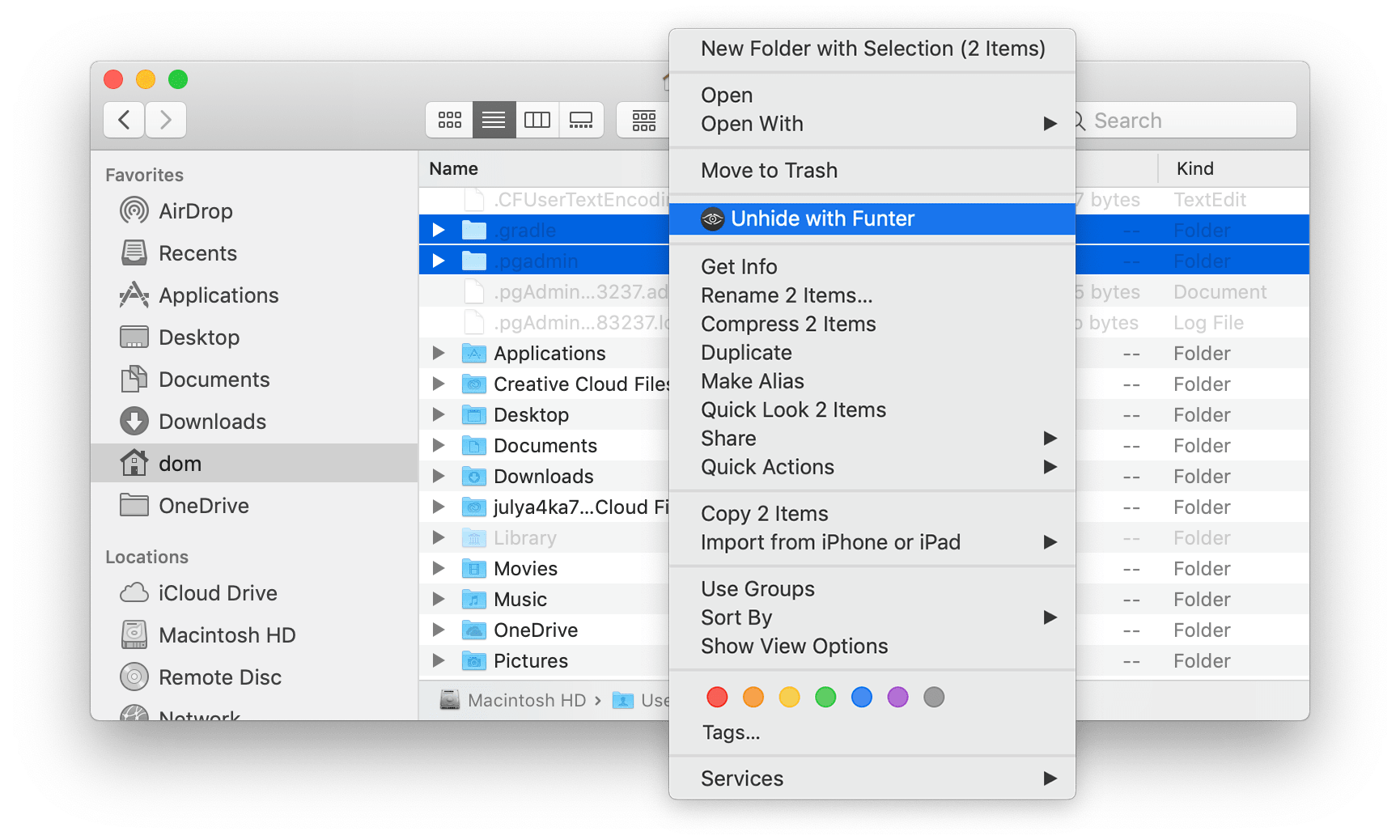

I've got la aliased to ls -a so if I want to see them I can with just the slightest of different character placement.īut seeing them every time I do an ls? That's not something I want. bashrc (or whatever shell you prefer) to make it so that you always see them. erId has a really long name that throws off the columns. You can show your hidden files in Windows 11 by configuring folder options. And there is a lot more that I don't care about seeing every time I type ls. Tip Hidden files should not be used to hide confidential information as any user may view them. If that is the case - it is possible that they are simply excluded from the project by default - please check 'Preferences File Types Ignore files and folders' field.
Hidden files mac#
A hidden file is primarily used to help prevent important data from being accidentally deleted. Im not a Mac user and do not know how this show/hide hidden files should work (I mean - what files are considered hidden) but Id guess they should start with a dot, e.g. Lets go for a moment to my old drive and its home directory. Files that exist on a computer, but don't appear when listing or exploring, are called hidden files. And things I don't care about seeing every single type I type ls. inkscape-etc/ Documents/Īnd thats not actually too bad. ~ $ lsĭevelopment/ IdeaProjects/ Music/ Public/

We don’t recommend doing this unless you know you need to access one of these files or folders for some reason.Let me go type ls on my home directory for a moment. But, if you know what you’re doing and you need to view these protected operating system files, there’s a setting you can change. They’re important system files and deleting or modifying them could damage your operating system, potentially even making Windows unbootable. In the Hidden files and folders section, choose to show or hide hidden files, folders, and drives.
Hidden files windows 8#
In Windows 8 and 7, select Folder Options and go to View. In Windows 11 and 10, select File Explorer Options and go to View.

These files are “protected” for a reason. Open Control Panel and select Appearance and Personalization. These are hidden files with the “system” attribute. When you show hidden files and folders, Windows will continue to hide protected operating system files. Windows has two different types of hidden files: Normal hidden items, and protected operating system files.
Hidden files software#
RELATED: Make a Super Hidden Folder in Windows Without any Extra Software From the View Tab, under Hidden files and folders, click Show hidden. View Protected Operating System Files on Windows 7, 8, and 10 Resolution Open My Computer or Windows Explorer. On Windows 8 and 10, it’s named “File Explorer Options” instead. Head to Control Panel > Appearance and Personalization > Folder Options. This window is also accessible via the Control Panel on any version of Windows. While the File Explorer method above offers the easiest way to find hidden files and folders on Windows 10, it isn’t necessarily the quickest. But it’s quicker to easily toggle hidden items on or off using the ribbon. Searching for Hidden Files and Folders Using Windows Powershell. This options window is also accessible on Windows 8 and 10-just click the “Options” button on the View toolbar in File Explorer. Certain files and folders have been hidden in all previous versions of Windows.


 0 kommentar(er)
0 kommentar(er)
